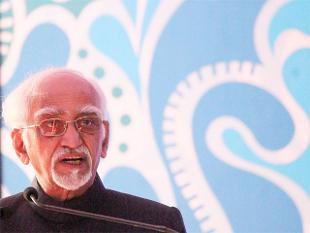
New Delhi, Jun 22: BJP general secretary Ram Madhav today stoked a controversy by questioning Vice President Hamid Ansari's absence at the Yoga Day event in the capital but later apologised after he was criticised on the social media platform.
Madhav, a prominent RSS leader, also accused Rajya Sabha TV, the public service broadcaster run by Parliament’s Upper House, of blacking out the Yoga Day event "completely" despite being run on taxpayers money. As Rajya Sabha Chairman, Ansari is the controlling authority for the channel.
In his first tweet, Madhav said, "Two questions. Did RS TV dat runs on tax payers money completely black out Yoga Day event? While President participated d VP gave a miss (sic)."
The BJP leader's allegation against RS TV was immediately countered by others, who tweeted screen shots of the channel's coverage of the yoga events.
Madhav later apologised. "I am informed dat d VP was unwell. I withdrew my tweet. My apologies because d institution of VP deserves respect (sic)," he said in another tweet. As the topic trended, he subsequently deleted both the tweets.
Some pro-BJP commentators complained on Twitter that RS TV, which is funded by the taxpayer, had not shown live the yoga mega event at Rajpath.
Social media attacked Madhav with some dubbing his criticism of the Vice President as 'shameful and embarrassing", that he was doing "foot in the mouth asan" and that he can destroy the divinity of yoga in the name of religious fundamentalism.
Madhav also drew flak for making an issue of Ansari's absence when participation in Yoga Day events was meant to be voluntary.





Comments
For most recent information you have to pay a quick visit internet and on web I
found this website as a most excellent web site for most
up-to-date updates.
Here is my blog :: bangladeshi web development company: http://www.webdevelopment247.net/
Add new comment